Jan 24: Local bright spots against a dark background
Also, presenters selected for Natural History Conference, kids learn about the blue economy, and Massachusetts positioned better than most on offshore wind
NOTE: The table of contents items below are linked to the articles, but this feature only works if you are reading the post in Substack while logged in - apologies for the inconvenience.
In this week’s issue:
Cape & Islands
Presenters selected for the Mass Audubon Wellfleet Bay’s Natural History Conference.
Over 300 students learned about blue economy careers at WaterWORKS 2025.
Massachusetts
Biden admin provides last minute boost to two Massachusetts offshore wind projects.
Why does Trump hate offshore wind? A picture is worth a thousand words.
United States
Trump wields his Sharpie to boost oil and gas, while kneecapping climate initiatives on Day One.
Trying to put the “climate hoax” at the center of US policy?
International
What does the world think about Trump pulling the US out of the Paris Agreement for the second time?
Led by Bloomberg, philanthropists cover US payment to UN Framework on Climate Change.
Upcoming Events and Activities
Cape and Islands
Trump’s Money-Freezing Executive Order Creates Uncertainty for Some Cape Projects
Day One, Trump signed the “Unleashing American Energy” Executive Order, which, among other things, froze disbursement of any funds appropriated under both the Bipartisan Infrastructure Act and the Inflation Reduction Act. Disbursements are stopped pending a 90 day agency review of their internal procedures and policies, and subsequent approval by Russ Vought, Trump’s once-and-future head the Office of Management and Budget.
The Cape has benefited from funds appropriated under these acts over the past few years. Ecosystem resilience and restoration in the National Sea Shore, the Herring River Restoration Project in Wellfleet, and, recently, the Mashpee River restoration are just a few examples, and, for the most part, the work is not complete on these projects. So, what happens now?
According to a colleague at a large nonprofit, “I think there is still a lot of confusion about whether funds are frozen, rescinded, and/or what is happening to funds in various states of the commitments and contracting process.”
For those organizations that could be affected by the possible freeze, he advised, “The best strategy seems to be to be in close contact with the contact person at the respective government agency that is providing the funds.”
[Trump’s] drastic move could already violate Congress’s spending authority under the Constitution. The Impoundment Control Act of 1974, a federal law that governs this authority, allows the president to pause funding for 45 days, not 90. (Vought believes that this law is “unconstitutional”), reported Heat Map.
“We’re assuming the courts are going to have to clarify some of these EOs (Executive Orders),” wrote an employee at one of the affected federal agencies in response to emailed questions.
With regard to how this freeze could affect the Herring River Restoration Project, Dale Rheault, Chair of Friends of Herring River, the nonprofit that catalyzed the project and has shepherded its progress for over fifteen years, wrote, “The Herring River Restoration has been years in the making. The progress is well underway. We will not be deterred.”
A Biden administration official told reporters last Friday that $96.7 billion in clean energy grants, or about 84 percent of grant funding from the Inflation Reduction Act, has been obligated, reported Reuters.
An Abundance of Science - Presenters Selected for Natural History Conference hosted by Mass Audubon Wellfleet Bay
“It’s really exciting that so much science is being done on the Cape,” said David Shapiro, Senior Teacher Naturalist for Mass Audubon Cape Cod.
Shapiro was one of the team selecting presentations for the 2025 Natural History Conference, hosted by Mass Audubon Wellfleet Bay. There were more submissions this year than last. “It’s really tricky to figure out which ones to choose – ideally we’d want everyone to speak,” said Shapiro. Submitters will be notified of the results Friday, January 24. This year there will be fourteen presentations and about eight posters.
In addition to a presentation on monitoring grey seals, and two on birds – one studying the Red Knot diet, and the the other examining the impact of habitat on migrant songbirds – there will be presentations showcasing the salt marsh restorations at Chase Garden Creek, Windswept Bog, and Wellfleet Harbor, and a related presentation on “Community Science for Coastal Resilience.”
“Restoration is the theme for this year,” said Shapiro, noting that the number of restorations correlates with the amount of funding available for these projects over the past few years, from both the federal and Massachusetts governments.
The conference is a great opportunity for attendees to talk to the researchers doing the work, and even “become part of that work,” as water quality monitor, or counting rare species or in many other volunteer roles, said Shapiro.
The conference “is a light in the middle of winter,” said Shapiro, and if you come early for the all-day event, “You’ll even get breakfast.”
WaterWORKS 2025 — It’s All About the Blue Economy
On January 14, over 300 students from across the Cape, Nantucket, Martha’s Vineyard, and Plymouth, and 100 members of the public, learned about jobs, internships, and opportunities in the “blue economy” at WaterWORKS 2025, hosted by the Cape Cod Blue Economy Foundation. They met representatives from 40 different exhibitors, had the chance to hear from panelists, and could even sign up on the spot to volunteer or intern with some exhibiting organizations.
The World Bank’s definition of the blue economy is the "sustainable use of ocean resources for economic growth, improved livelihoods, and jobs while preserving the health of ocean ecosystem.”
Katy Acheson, Executive Director of the Cape Cod Blue Economy Foundation, explained that exhibitors come looking for different things from the event. For some the event helps them meets their organization’s outreach requirements; for others, including Cape Cod Community College, AmeriCorps, US Coast Guard, or Sea Education Association, this is a recruiting opportunity; and for yet others, like Allan Harbor Marine Service and Atlantic White Shark Conservancy, the event is a job and internship matching event.
While they may be attracted by different goals, Acheson wrote, “Every exhibitor I hear back from expresses leaving the event with refreshed optimism for the future.”
This was the first year that WaterWORKs invited non-students to join the event. The 100 members of the public who attended the afternoon session were mostly college students, job seekers, or there to network. Acheson did also meet a grandmother there looking for a summer internship for a grandchild away at college.
Acheson confirmed that they plan to invite the general public again next year, but will wait for the feedback before confirming the format. “We're always brainstorming ways to adapt and tailor the event to make it more impactful for the most participants,” she wrote.
A Conversation with Judith Holt: What can we do?
Turns out, quite a lot. Judith Holt discusses what we can do to make our homes and buildings more energy efficient and carbon-free (saving both money and the planet) and shares stories about her work with Mass Audubon, Heritage Museums and Gardens, and at least 15 churches.
An unexpected treat: Judith tells the story of working with Buckminster Fuller running his World Game to help policy makers visualize the destruction that could be caused by using the stockpile of nuclear missiles.
⏺️Listen to the conversation here.
Massachusetts
Biden Administration Gives Last Minute Boosts to Two Massachusetts Offshore Wind Projects
On January 17, the last working day of the Biden Administration, two Massachusetts offshore wind projects won key approvals:
US Bureau of Ocean Energy Management (BOEM) granted Southcoast Wind its construction and operations plan approval for its 2.4GW offshwore wind farm, located about 20 miles south of Nantucket. This is the final BOEM approval needed for Southcoast Wind to begin construction, reported Windpower Monthly. Southcoast Wind is expected to power over 840,000 homes. Southcoast Wind, however does still need some additional smaller federal permits.
Vineyard Wind 1 was allowed by the US Bureau of Safety and Environmental Enforcement (BSEE) to resume operations of one of its turbines for the first time since a blade failed on July 13, 2024. The single functioning turbine is again feeding renewable energy to the grid.
However, the investigation into the blade failure revealed manufacturing problems at the GE Vernova plant in Quebec, Canada. BOEM is requiring Vineyard Wind to remove all blades manufactured at that plant, which are installed in up to 22 wind turbines, and has forbidden installation of any more blades from that plant. All new blades for this project will now be manufactured at GE Vernova’s plant in France.
But here’s the monkey wrench: “We’re not going to do the wind thing,” Trump said.
The title of the Executive Order, one of many signed by Trump on January 20, pretty much sums up the content:
The order breaks into three main parts:
No more new leases for offshore wind on the Offshore Continental Shelf (but leasing for oil, gas, minerals, and environmental conservation is still fine).
Existing offshore wind leases will be subject to a “comprehensive review” by the Secretary of the Interior and Attorney General to determine the “necessity of terminating or amending any existing wind energy leases” and making any such recommendations to the President.
A temporary halt to all “new or renewed approvals, rights of way, permits, leases, or loans for onshore or offshore wind projects pending the completion of a comprehensive assessment and review of Federal wind leasing and permitting practices.”
The consequences:
According to the government’s permitting dashboard, seven offshore wind projects are “in progress” and more in earlier stages will be halted. But nine projects have completed their federal permitting, and including five that are actively under construction.
“In New England, we’ve got about 6.5 gigawatts of offshore wind energy that is already leased and already permitted, and which would be unaffected by anything in this order — at least for now,” said Kate Sinding Daly, senior vice president for law and policy at the Conservation Law Foundation, reported WBUR.
As to the potential of existing leases to be terminated or amended, Sinding Daly said any attempt to dissolve federal contracts or rescind federal permits would almost certainly be met with legal challenges.
Offshore wind’s importance to Massachusetts
In a statement on Tuesday, Governor Maura Healey said about the offshore wind industry, “ It's really important for jobs, it's really important for our economy, it's really important for meeting our climate goals, and it's important for establishing regional independence when it comes to energy.”
Healey continued, “We're watching closely to see what the president does. He's issued some executive orders, but we'll see what else comes on this.”
The Governor emphasized the harm that would fall across many states, if the offshore wind industry were to be damaged, “ It's not just Massachusetts jobs and jobs in New England that are affected by offshore wind, it's jobs in Louisiana, in Georgia, in Virginia, in Wisconsin and Michigan. Why? Well, because those are places where they're building out supplies for the offshore wind industry.”
Massachusetts in Better Shape Than Others — State Senator Julian Cyr
“Fortunately, we had a head start in Massachusetts in terms of investing in offshore wind power. The Trump Administration’s order will frustrate projects that are still in the planning stages but should not immediately affect those that are already leased and permitted. We do expect further action from the Trump Administration, but intervention in projects that are leased and permitted will end up in court,” State Senator Julian Cyr, a Democrat who represents the Cape and Islands, wrote in reponse to questions.
A potential existential threat to wind power
The block on permitting for both onshore and offshore wind could affect up to half of all new wind projects in the US, even those sited on private or state land, reported Jael Holtzman of Heatmap. The block is looking like “a potentially existential threat to the industry. ..Wind projects are just so large and impactful that it’s hard to avoid [needing] a federal permit.”
Why does Trump hate offshore wind? That’s his fancy golf course in Scotland in the photo.
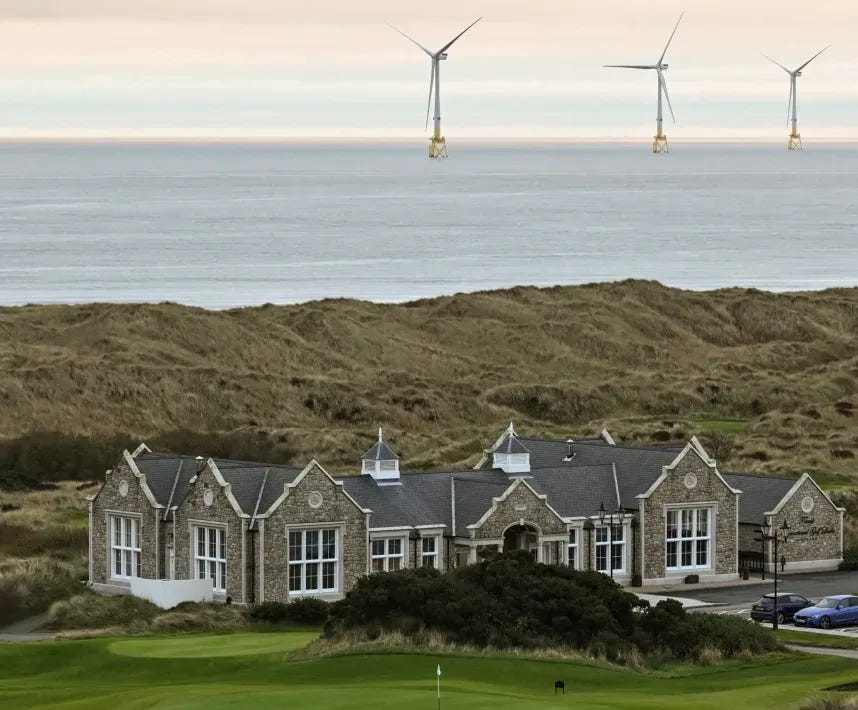
In May of 2013, Trump filed a complaint with the Scottish government describing the offshore wind farm as “an ugly cloud hanging over the future of the great Scottish coastline,” and arguing that the wind farm should be relocated or shouldn’t be built at all. In 2018, the wind farm started producing enough renewable energy to power 80,000 homes, reported Fast Company.
United States
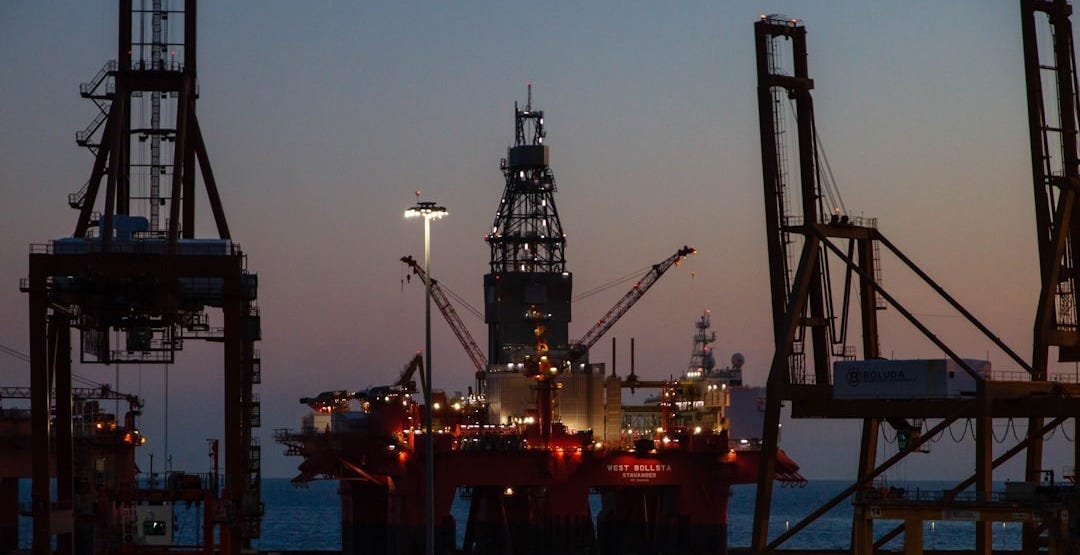
Trump takes a cudgel to climate action while boosting fossil fuels
On Day One, Trump signed four Executive Orders (EOs) specifically targeting climate action: (1) Declaring an Energy Emergency, (2) Unleashing American Energy, (3) Quitting Paris Agreement and Revoking the US International Climate Finance Plan, and (4) Ending Wind Power.
The language in the EOs is downright Orwellian — up is down, good is bad, poor sad Americans need more fossil fuels to thrive — but taken together, at a high level they can be seen to do five things:
Boost fossil fuels (Drill, baby, drill!) by:
Easing permitting by declaring an “emergency” to enable an end run around environmental protection laws and eliminating the calculation of the social cost of carbon from any permitting process;
Opening up more land for oil and gas development, including in Alaska;
Increasing the need for fossil fuels, which are losing ground to renewables — in the first half of 2024, over half of the energy generated in the EU was from renewable sources — by lowering efficiency and emission standards for cars and appliances, thereby forcing consumers to pay for more fuel to get the same amount of useful work;
Opening additonal markets by resuming the permitting of LNG export terminals, so that companies can sell more gas overseas, as America is facing a glut.
Block the development, deployment, and adoption of renewable energy by freezing the disbursement of funds from both the Inflation Reduction Act and the Bipartisan Infrastructure Law, which will stop billions of funding going to everything from EV charging stations and EV rebates, to hydrogen hubs, to battery manufacturing plants. Even if this freeze proves temporary — which is most likey the case, assuming that the courts will strike this down — the delays will cause enormous damage to projects.
Attempt to stop any new wind power development, with a special focus on offshore wind (see the discussion above, in the “Massachusetts” section).
Eliminate all efforts to achieve environmental justice by repealing President Bill Clinton’s Executive Order, issued in 1994.
“The order directed the federal government to consider environmental justice and potential discriminatory effects when making decisions, with particular focus on the impact of those decisions on minority, tribal and low-income community health,” according to USA Today.
Isolate the US by withdrawing from the UN Paris Agreement, putting the US in excellent company with Iran, Libya, and Yemen as the only other countries not party to the Agreement.
The same order cancelled the US participation in the US International Climate Finance program, which is the funding the US provides to help “spur much-needed emissions reductions in other countries, help the most vulnerable communities who have done the least to contribute to the climate crisis to adapt to its mounting impacts.” According to the NRDC, President Biden had pledged to raise the committment to over $11B in 2024.
Trying to center climate denial in US policy?
Tucked into the Unleashing American Energy Executive Order, is a short, innocuous sounding paragraph that orders the Administrator of the EPA, along with other agency heads, to submit recommendations to the Director of OMB, about whether a 2009 "Endangerment Finding” for greenhouse gases is legal and still applicable.
An Endangerment Finding is a determination made by the EPA that a certain pollutant, in this case greenhouse gases, poses a threat to public health, which then allows the EPA to regulate that pollutant under the Clean Air Act.
Will the incoming EPA Adminstrator, Lee Zeldin, actually try to find that greenhouse gases are not a threat, thereby placing the idea that climate change is a “hoax” at the center of US climate policy? And would they be able to pull this off?
According to the NRDC, “In the face of overwhelming science, it’s impossible to think that the EPA could develop a contradictory finding that would stand up in court.”
The recommendation is due by February 19th.
International
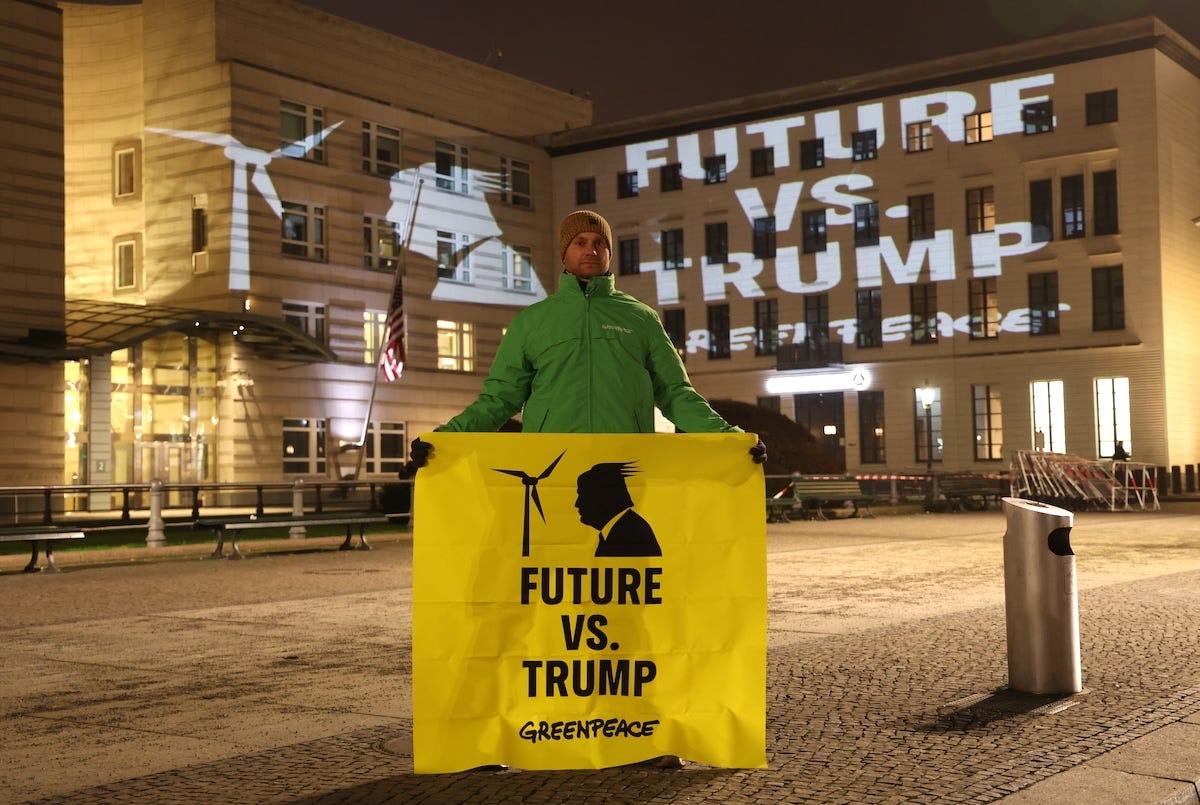
We are not impressed
The response to Trump withdrawing the US from the 2015 UN Paris Agreement for the second time:
At the World Economic Forum in Davos, Switzerland, European leaders spoke out against President Donald Trump’s withdrawal of the United States from the 2015 Paris Agreement, saying they would remain firmly committed to the global climate accord, reported EcoWatch.
The UN World Meteorological Organization (WMO), spokesperson Clare Nullis said in a statement: “The Secretary-General remains confident that cities, states and businesses within the United States - along with other countries - will continue to demonstrate vision and leadership by working for the low-carbon, resilient economic growth that will create quality jobs and markets for 21st century prosperity."
C40, a group of almost 100 Mayors from cities around the US and the globe responded: “Despite this act of climate vandalism, American city mayors and the C40 Cities network have reaffirmed their commitment to leading the way forward to confront the climate crisis.”
Philanthropists, led by Bloomberg, lean in, cover US financial obligation to UN Framework Convention on Climate Change
Climate Home News, by Matteo Civillini, Jan 23, 2025
As the world’s largest economy, the US should pay the largest dues for the functioning of the secretariat of the UN Framework Convention on Climate Change (UNFCCC), based on UN criteria. The US annual contributions typically cover 22% of the body’s core budget which is made up of contributions from its member states.
Bloomberg Philanthropies had already stepped in with a cash injection to the UN climate body during Trump’s first term in the White House and kept contributing through the Biden presidency. It was also the biggest non-state funder of UNFCCC activities in 2024 with a $4.5 million payment. Full story.
Upcoming Events and Activities
Feb 4, Virtual — Woodwell Climate Research Center, Our Climate Future: Fact + Fiction
How do we create a rich, nuanced vision of our climate future that can motivate and guide climate action today? This virtual event brings together a diverse panel of experts to explore the relative strengths of science and science fiction—and the potential synergies between the two—in understanding what the future might look like. Information and registration HERE. Free.
📅Feb 4, 1:30-2:30 pm 🗺️📌Virtual
Check out the calender HERE - there are great upcoming activities!
Powered by the “Communications Cohort,” co-led by the Barnstable Land Trust and APCC.

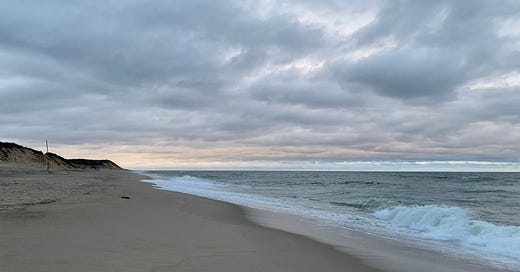



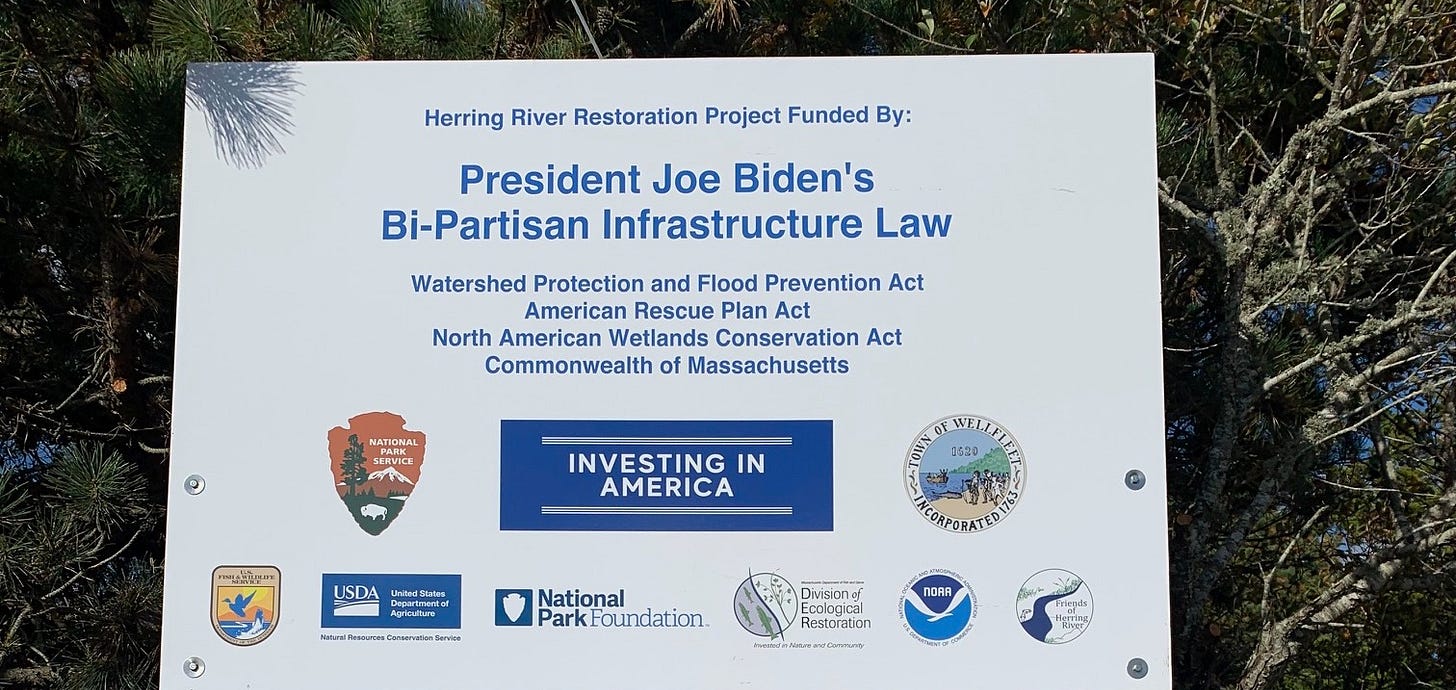
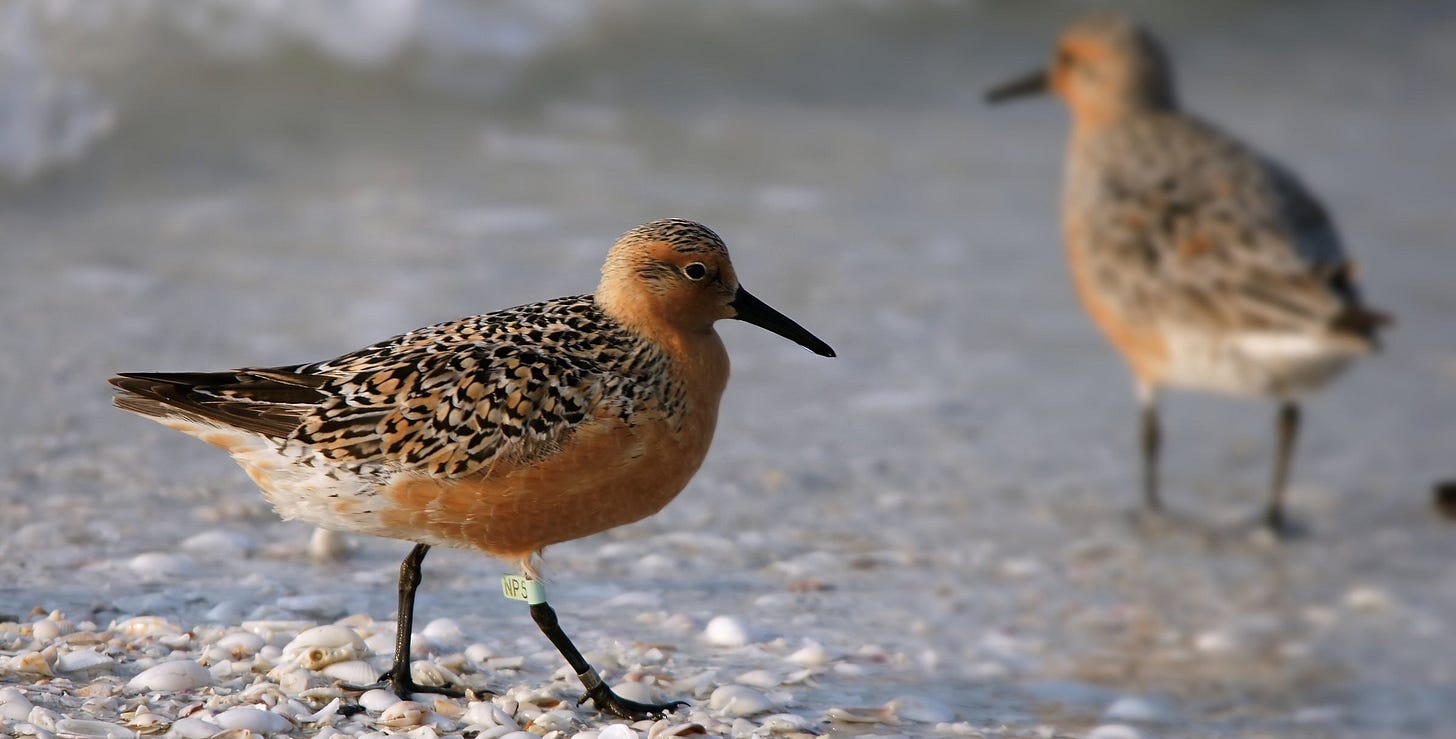


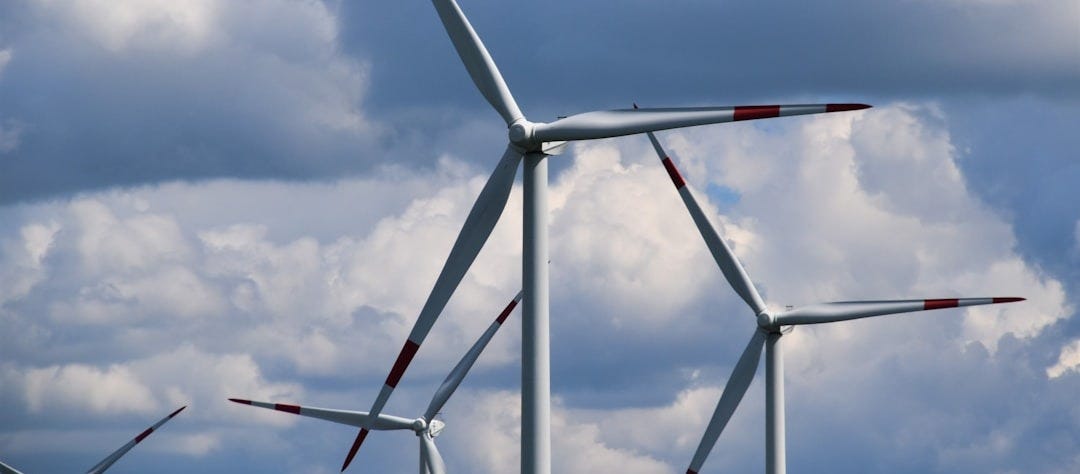
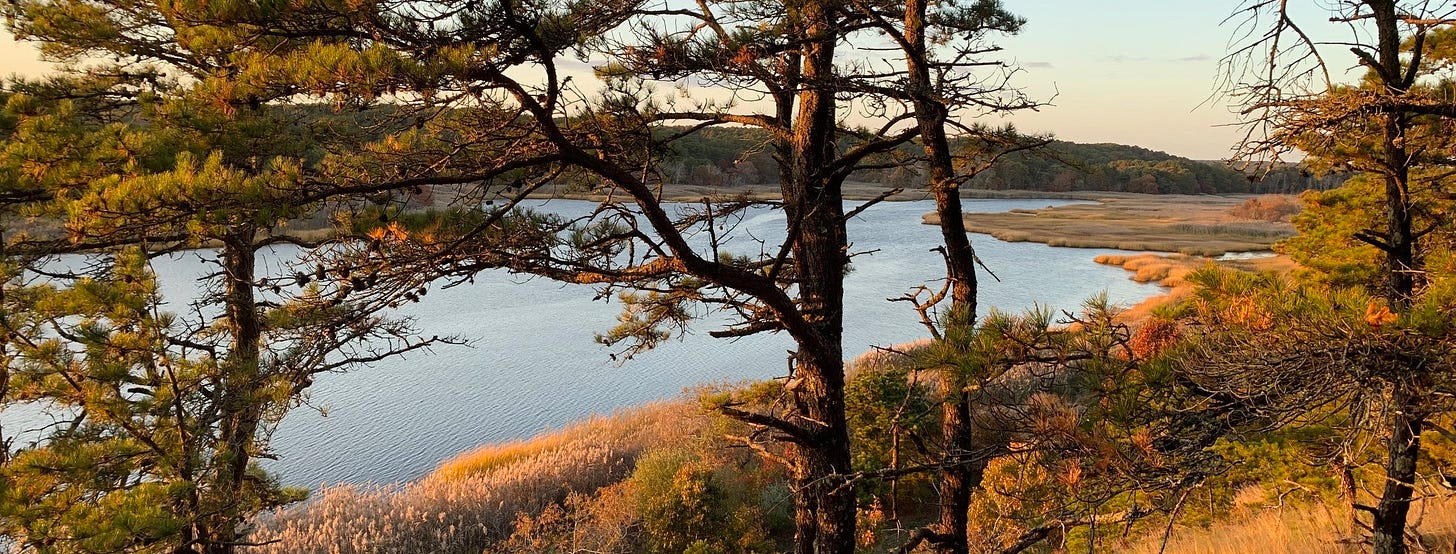

Thank you for highlighting WaterWORKS as one of your bright spots 🌊🙌